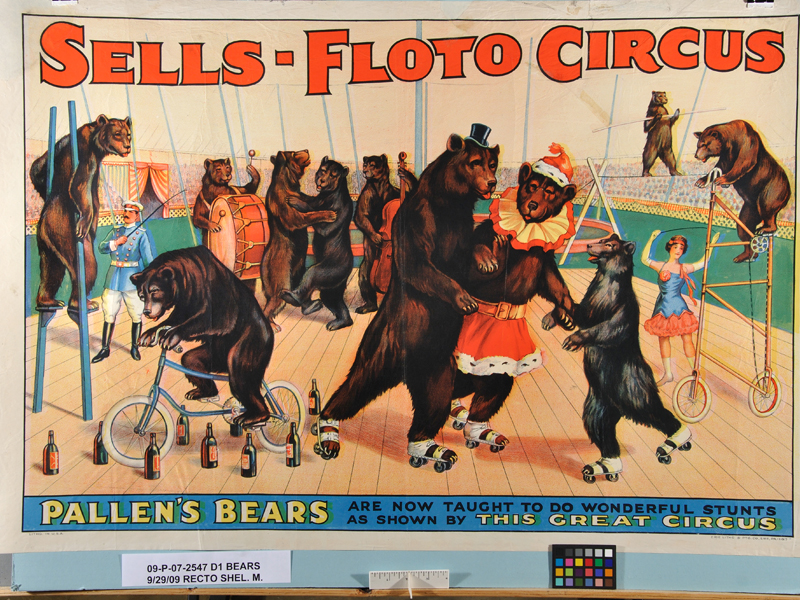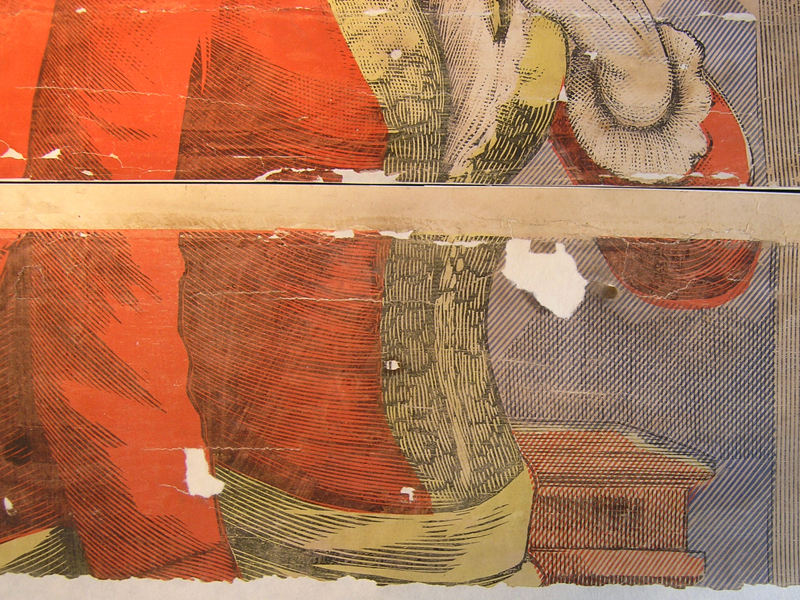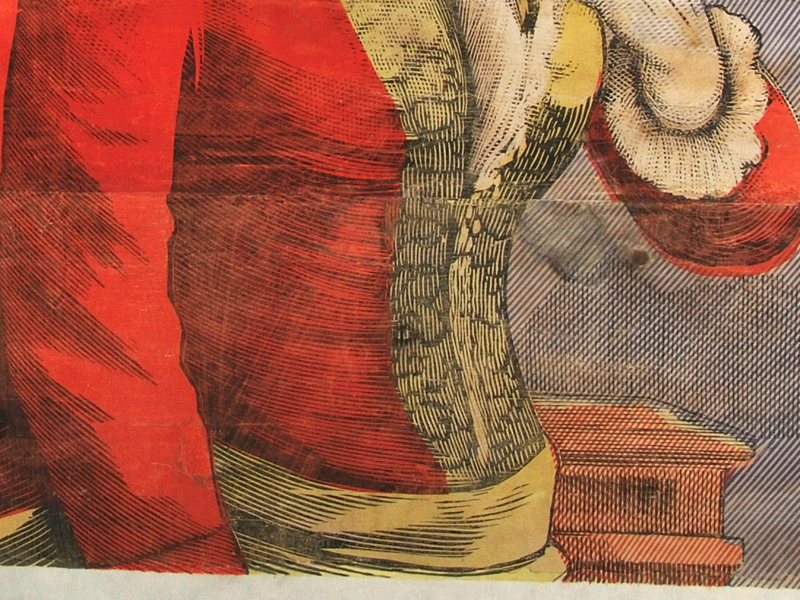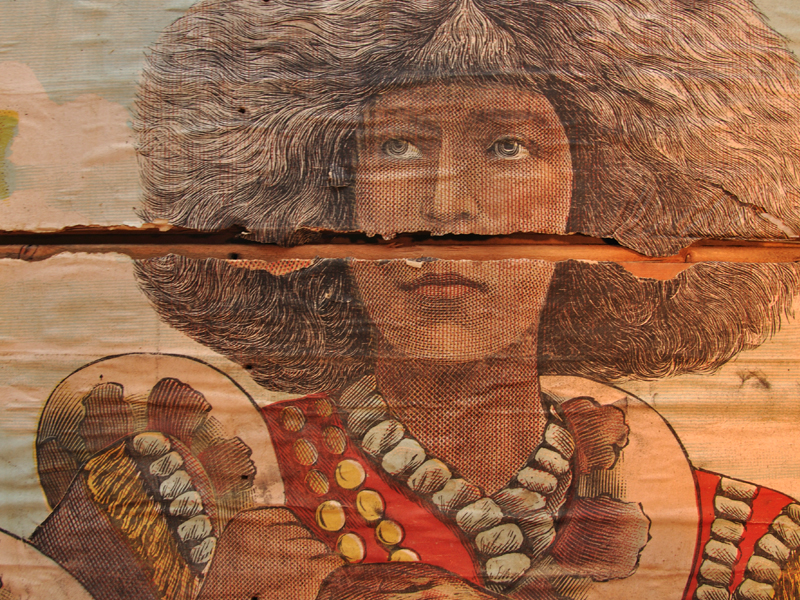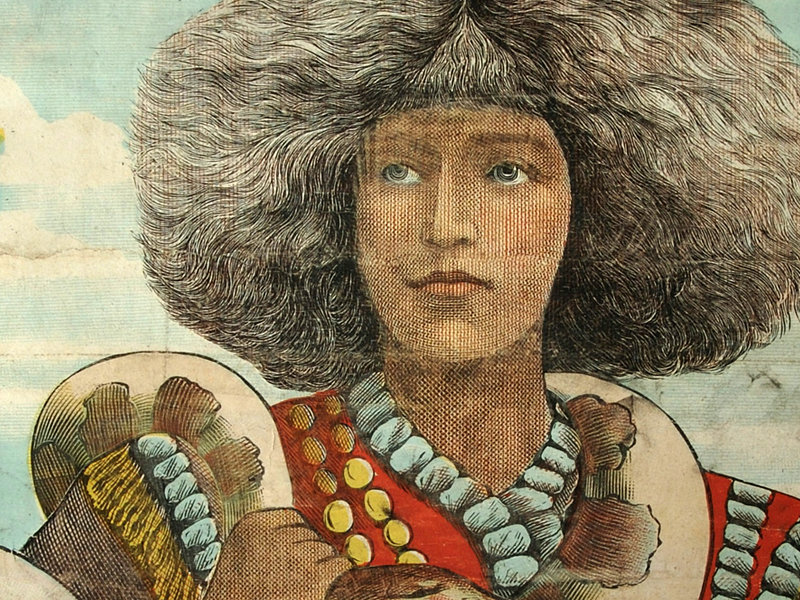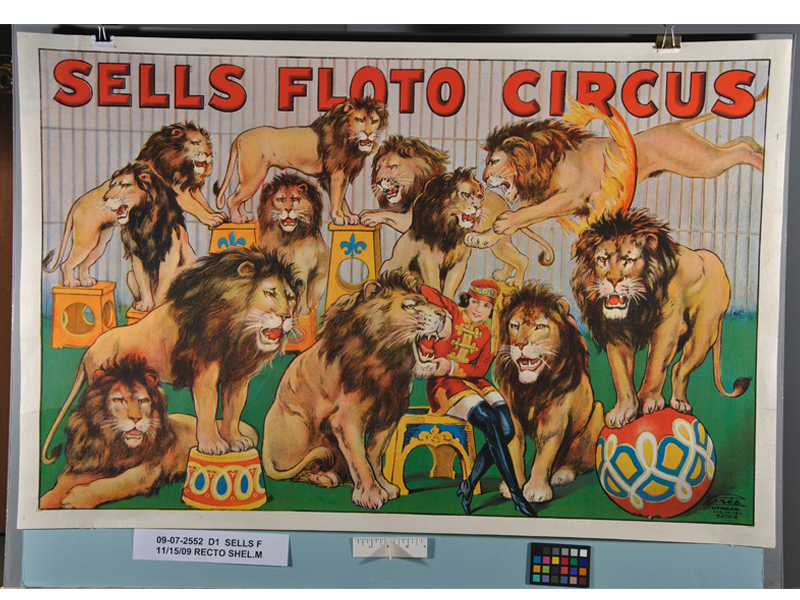Shelburne Circus Posters
The Shelburne Museum has an extensive circus poster collection spanning several decades of shows and circus owners. Several of the posters were in need of stabilization as they had small losses and had previously been repaired with cellophane pressure-sensitive tapes.
The Process
Seen above are the before and after treatment photographs of a poster depicting Dancing Bears. The poster was gently surface cleaned with fine eraser crumbs cleared with a soft brush. Old pressure-sensitive tapes were removed with locally applied heat and the adhesive residues were reduced with the appropriate solvent. Then the media was tested for stability with droplets of water and the poster was gently humidified in preparation for aqueous treatment. The humidified poster was carefully placed on a bath of filtered water for a half hour to reduce discoloration and soluble acids. The poster was removed and air-dried. Tears were mended on the verso with Japanese tissue and wheat starch paste. Losses were filled with a similar modern paper and inpainted to match the surrounding areas. To see the conservation process, go to youtube video at http://www.youtube.com/watch?v=kUQ6Fzyzj1c
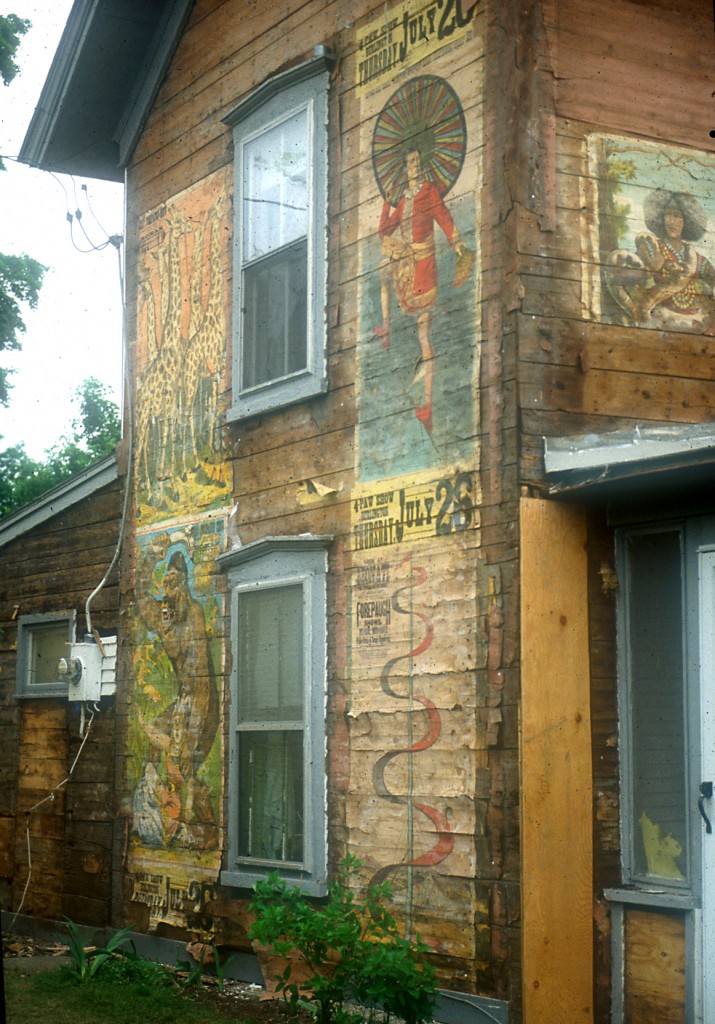
Snake Charmer upper right
The Shelburne Museum asked for my assistance with a poster that was discovered in Colchester, VT in the 1990’s located on the side of a home in the process of having vinyl siding attached. The museum staff was called in and the poster – boards and all—was removed and stored at the museum for several years awaiting funding for conservation. Once in my lab under closer examination, it was possible to see another poster underneath the “Snake Charmer” so the goal of the treatment was to save both artifacts if possible. The posters were removed from the boards with local applications of controlled moisture and removed with mechanical action using a Teflon spatula. Once removed, the pieces were separated using local applications of moisture in the form of warmed, water vapor. Once separated, the bottom image was that of Mille-Christine, Siamese twin sisters, who were exploited by the circus as the “Two Headed Lady”.
A similar treatment process as described above was carried out with the additional step of applying an overall lining of Japanese paper to the verso of the posters to align tears and reintegrate the pieces. Inpainting of losses and abrasions was carried out using Winsor Newton watercolors.


